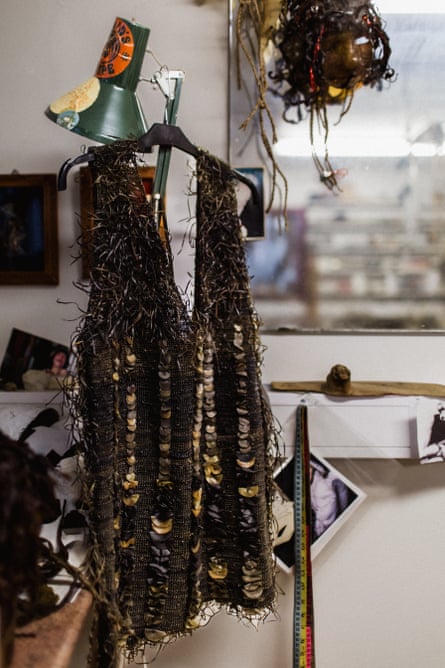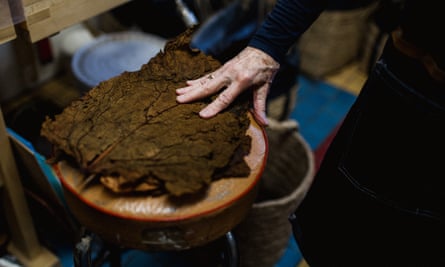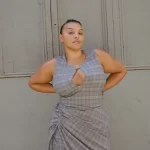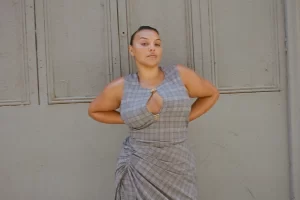At the Icelandic home of Katrín Þorvaldsdóttir, foraged material is turned into masks, clothing and even shoes
Katrín Þorvaldsdóttir’s Reykjavík home is a temple of seaweed. Looped around her neck as jewellery, mounted on the wall in theatrical masks and embedded in intricately woven high-fashion clothing, it is everywhere.
But other than a light, sweet seaweed scent drifting through her workshops, the material is not immediately obvious. Some of the objects look like leather, others like animal skin or lace. Adorning a jacket on a mannequin, it looks too beautiful to pass as seaweed.

The artist, who has been working with the material for 30 years, says seaweed has huge potential for use as a sustainable material for design.
“When I started using seaweed they said ‘you are crazy’. So then I thought ‘then I’m doing something right’,” says Þorvaldsdóttir over coffee in her candlelit kitchen. “My mission in life is to bring out the beauty in life and in seaweed.”
The artist has worked in theatre as a puppeteer, mask maker, costume maker, and production designer, and in drama-based teaching. She is now working on an exhibition to be held in Iceland next year.
Despite being the world’s second largest global aquaculture product by volume, seaweed is usually associated with food rather than as a material. And that’s a mistake, says Þorvaldsdóttir. “Everyone is focused on seaweed as a food and nothing else.”
She often works with younger designers and makers to help unlock the potential of seaweed as a material for future generations. “Some want to continue and others not because it is a new material and it doesn’t come instead of anything,” she says. “I can see people are getting more aware that the textile industry is so polluting, and the only way we can correct that is our attitude towards how we treat ourselves.”
But seaweed is not a straightforward material to work with. First, Þorvaldsdóttir goes to the shore to select her material, negotiating slippery rocks and, on occasion, whirlpools. Seaweed varies enormously from piece to piece, depending on where she finds it, as well as between types.
“The same kind of species, like Saccharina [latissima, also known as sugar kelp and kombu] and [Laminaria] digitata [also known as oarweed] – they can be very, very different,” she says. “And the reason is very simple. Because it is brought up in different currents and in different environments.”

The Laminaria digitata in Reykjanes, a peninsula in south-west Iceland, she adds, is made stronger by the powerful waves of the Atlantic current, making it ideal for use in making shoes. Saccharina latissima, meanwhile, varies hugely. “I never find two alike. Never.”
Before she works with the seaweed, she collates and bags it, labelled with the place and date of collection, and applies a secret sustainable treatment. In one of her workshops lie neat piles of treated seaweed tendrils, which, she points out, all have different features. In another room, the material is being treated on hangers. “It’s a forest of seaweed,” she says.
Among her influences are the late British designer Alexander McQueen – who she says “goes all the way, he’s so sincere” – the Japanese designer Rei Kawakubo and the music of the Icelandic musician Björk. She says she has also been shaped by the writing of the late Icelandic author Guðmundur Páll Ólafsson and the US marine biologist Rachel Carson.
She first came to the medium of seaweed after she left Spain, where she used to live, and was no longer able to get the recycled paper she had used to make puppets.

Working with seaweed is a craft, she says. “It is not ‘just take this and design out of the blue’. You have to know the material, you have to listen to the material, so it takes time.”
From cosmetics, food and clothing to water containers – as demonstrated in the 2019 London Marathon, where seaweed capsules were distributed to runners instead of plastic bottles – the potential for seaweed is vast, Þorvaldsdóttir believes. Her work with it has made her optimistic about the future. “We’re on the right path,” she says.
Amid modern life’s demands for instant gratification and fast results, she says it is important to have patience when it comes to progress. “We have to just remember it takes time, and then just go deeper and deeper and hold on for longer, and not give up.”
Source : The Guardian




























